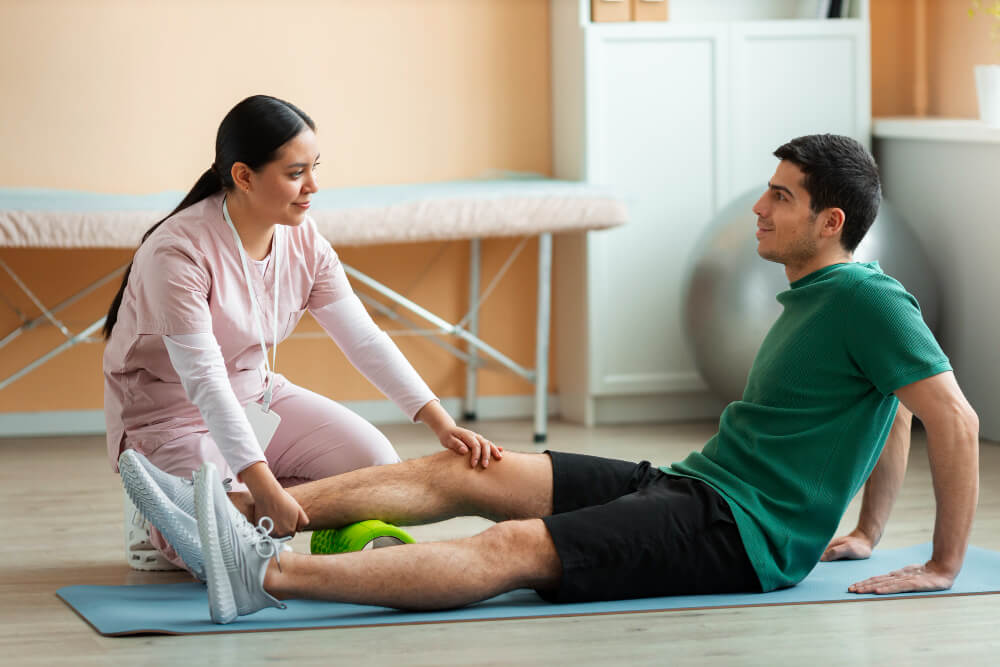Muscle Mayhem: Demystifying Strains, Sprains, and Your Path to Recovery
Ouch! That unexpected twinge in your leg, the sharp ache in your back – these are the unwelcome greetings from muscle strains and sprains. These common injuries, often mistaken for each other, can bring your active life to a screeching halt. But fear not, fellow adventurers! This comprehensive guide will equip you with the knowledge and tools to navigate the world of muscle mayhem, from recognizing the culprits to finding the fastest route to recovery.
The Suspects: Strain vs. Sprain – Cracking the Case of Muscle Mischief
Have you ever wondered what separates a strain from a sprain? The answer lies in the anatomy of your body. Muscle strains occur when muscle fibers themselves are overstretched or torn, often due to sudden forceful contractions or repetitive movements. Think of it like pushing your car beyond its engine capacity – the muscle fibers take the brunt of the stress.
Sprains, on the other hand, involve the ligaments, those tough bands connecting bones at your joints. When a joint is twisted or forced beyond its normal range of motion, the ligaments can stretch or tear, leading to that familiar “popping” sound and instant pain. Imagine your ligaments as the suspension cables of your bridge; excessive force can cause them to loosen or even snap.
The Lineup of Symptoms: Identifying the Enemy
So, how do you tell if you’ve been tangoing with a strain or a sprain? While the pain is a universal language of both injuries, here are some telltale signs to help you decipher the culprit:
Muscle Strain:
- Sharp or aching pain in the muscle fibers
- Weakness in the affected area
- Tenderness to touch
- Muscle spasms or twitching
- Limited range of motion (not as severe as with a sprain)
Sprain:
- Sudden, sharp pain in the joint
- Swelling and bruising around the joint
- Instability or looseness in the joint
- Difficulty bearing weight on the affected area
- Popping or snapping sound at the time of injury
The First Line of Defense: R.I.C.E. to the Rescue
Now that you’ve identified the enemy, it’s time to deploy your initial line of defense – the R.I.C.E. protocol. This acronym stands for:
- Rest: Give your injured muscle or joint the time it needs to heal. Avoid activities that cause pain, and switch to low-impact alternatives until you’re pain-free.
- Ice: Apply ice packs to the affected area for 15-20 minutes at a time, several times a day. Wrap the ice pack in a towel to prevent skin irritation.
- Compression: Use an elastic bandage or compression sleeve to reduce swelling and provide support. Make sure it’s snug but not too tight.
- Elevation: Keep the injured area above your heart whenever possible to reduce swelling.
Beyond R.I.C.E.: Advanced Treatment Strategies for Speedy Recovery
While R.I.C.E. is the cornerstone of early treatment, your recovery journey doesn’t stop there. Depending on the severity of your injury, consider these additional options:
- Over-the-counter pain relievers: Nonsteroidal anti-inflammatory drugs (NSAIDs) like ibuprofen or naproxen can help manage pain and inflammation.
- Physical therapy: A physical therapist can design a personalized exercise program to improve flexibility, strength, and range of motion in the affected area.
- Heat therapy: Once the initial inflammation has subsided, applying heat can help improve blood flow and promote healing.
- Massage therapy: Gentle massage can help release muscle tension and improve circulation.
When to Call for Backup: Seeking Professional Help for Tough Cases
Remember, while most muscle strains and sprains heal well with home care and patience, some situations require professional intervention. Don’t hesitate to consult a doctor if you experience:
- Severe pain that doesn’t improve with R.I.C.E. and medication
- Numbness or tingling in the affected area
- Significant deformity or instability in the joint
- Fever or chills
- Difficulty bearing


